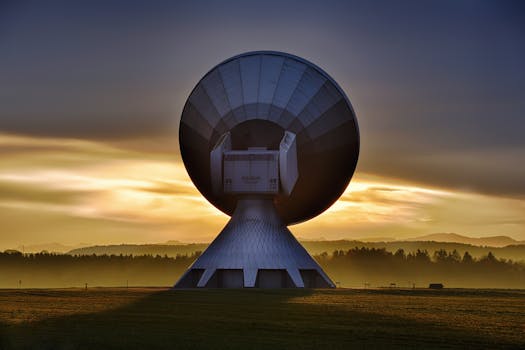The Rise of Mega-Constellations: Latest Updates in Satellite Telecommunications – The Future of Global Connectivity

The Rise of Mega-Constellations: Latest Updates in Satellite Telecommunications – The Future of Global Connectivity

The Focus Keyword Mega-Constellations is transforming the way we communicate and access information globally. The rise of mega-constellations is revolutionizing the field of satellite telecommunications, enabling faster and more reliable global connectivity. In recent years, several companies have launched numerous satellites into low Earth orbit, creating a network of interconnected satellites that can provide high-speed internet access to remote and underserved areas.
The concept of mega-constellations was first introduced in the 1990s, but it wasn’t until the 2010s that the technology became viable. Companies like SpaceX, OneWeb, and Amazon’s Kuiper Systems have been at the forefront of this development, investing billions of dollars in the creation of these satellite constellations. The goal is to provide global coverage, bridging the digital divide and enabling people to access the internet from anywhere in the world.
How Mega-Constellations Work

Mega-constellations consist of hundreds or even thousands of small satellites that are launched into low Earth orbit, typically at an altitude of around 500-1,200 kilometers. These satellites are equipped with advanced technology, including high-gain antennas, transponders, and propulsion systems. They communicate with each other and with ground stations, forming a network that can provide high-speed internet access to users on the ground.
The satellites in a mega-constellation are typically arranged in a specific pattern, with each satellite serving a specific region or area. The satellites can be used for a variety of purposes, including internet connectivity, navigation, and Earth observation. The use of mega-constellations has the potential to transform the way we communicate and access information, enabling new applications and services that were previously not possible.
Benefits and Challenges of Mega-Constellations

The benefits of mega-constellations are numerous. They have the potential to provide high-speed internet access to remote and underserved areas, bridging the digital divide and enabling people to access the internet from anywhere in the world. They can also provide backup connectivity in case of natural disasters or network outages, ensuring that critical communication services remain available.
However, there are also challenges associated with the development and deployment of mega-constellations. One of the main concerns is the risk of space debris, as the large number of satellites in orbit can increase the risk of collisions and create a hazardous environment for other spacecraft. There are also concerns about the impact of mega-constellations on the night sky, as the satellites can reflect sunlight and create a bright, diffuse glow that can interfere with astronomical observations.
Another challenge is the regulatory framework, as the deployment of mega-constellations requires coordination with governments and regulatory agencies around the world. The use of mega-constellations also raises questions about data privacy and security, as the transmission of sensitive information over a network of satellites can create new risks and vulnerabilities.
Latest Developments and Updates

Despite the challenges, the development of mega-constellations is moving forward rapidly. Companies like SpaceX and OneWeb are launching new satellites on a regular basis, expanding their constellations and improving their services. The European Space Agency (ESA) and other organizations are also involved in the development of mega-constellations, with a focus on creating a sustainable and responsible framework for the use of these technologies.
In recent months, there have been several significant developments in the field of mega-constellations. For example, SpaceX launched its first batch of Starlink satellites in May 2019, marking the beginning of its ambitious plan to create a global network of interconnected satellites. OneWeb also launched its first batch of satellites in February 2020, with the goal of providing global internet coverage by the end of 2022.
The use of mega-constellations is also being explored for other applications, such as navigation and Earth observation. The ESA is developing a new navigation system called the European Global Navigation Satellite System (Galileo), which will use a constellation of satellites to provide accurate positioning and timing information. The use of mega-constellations for Earth observation is also becoming more prevalent, with companies like Planet Labs and DigitalGlobe using constellations of small satellites to collect high-resolution images of the Earth.
See more:




